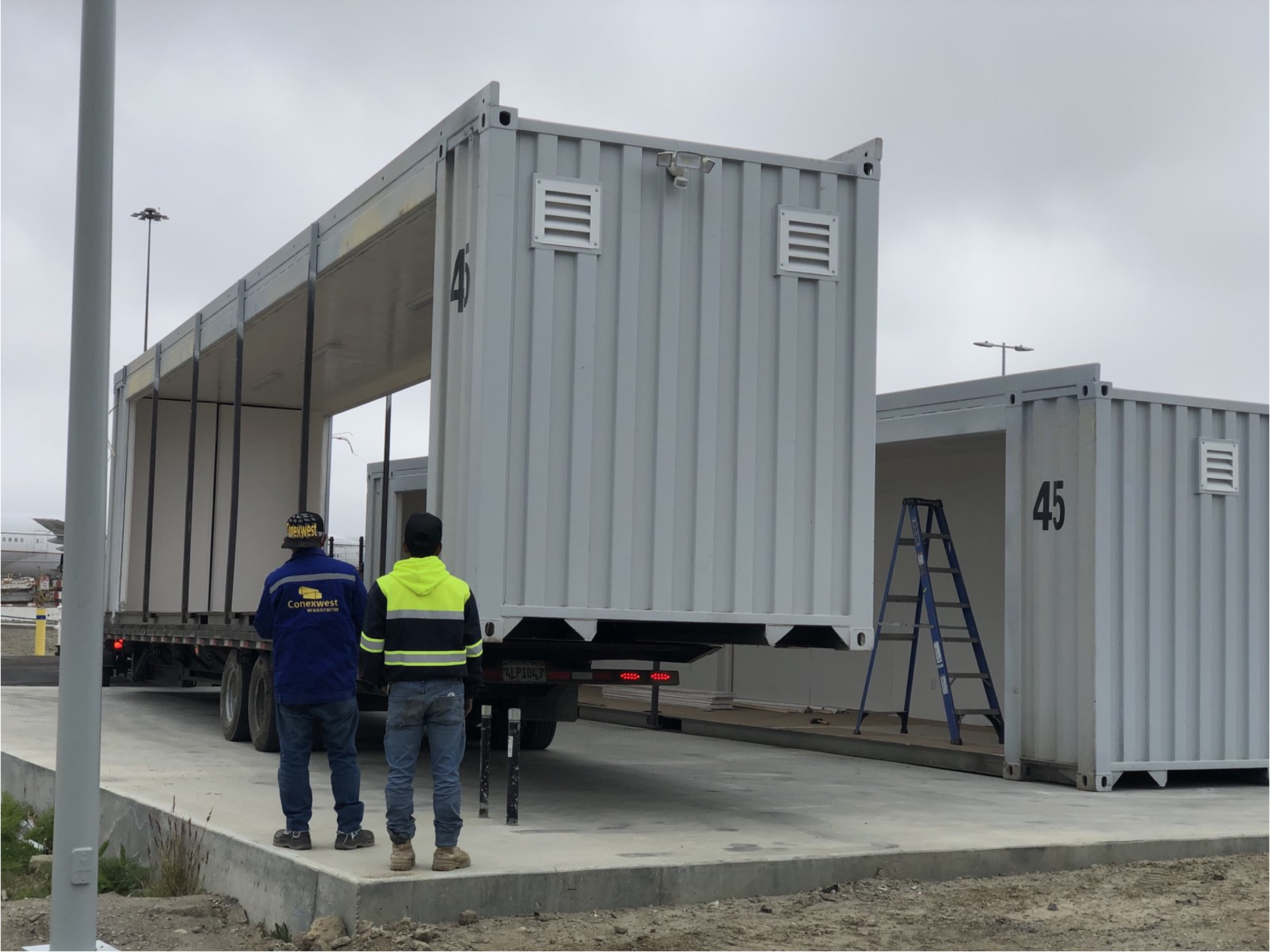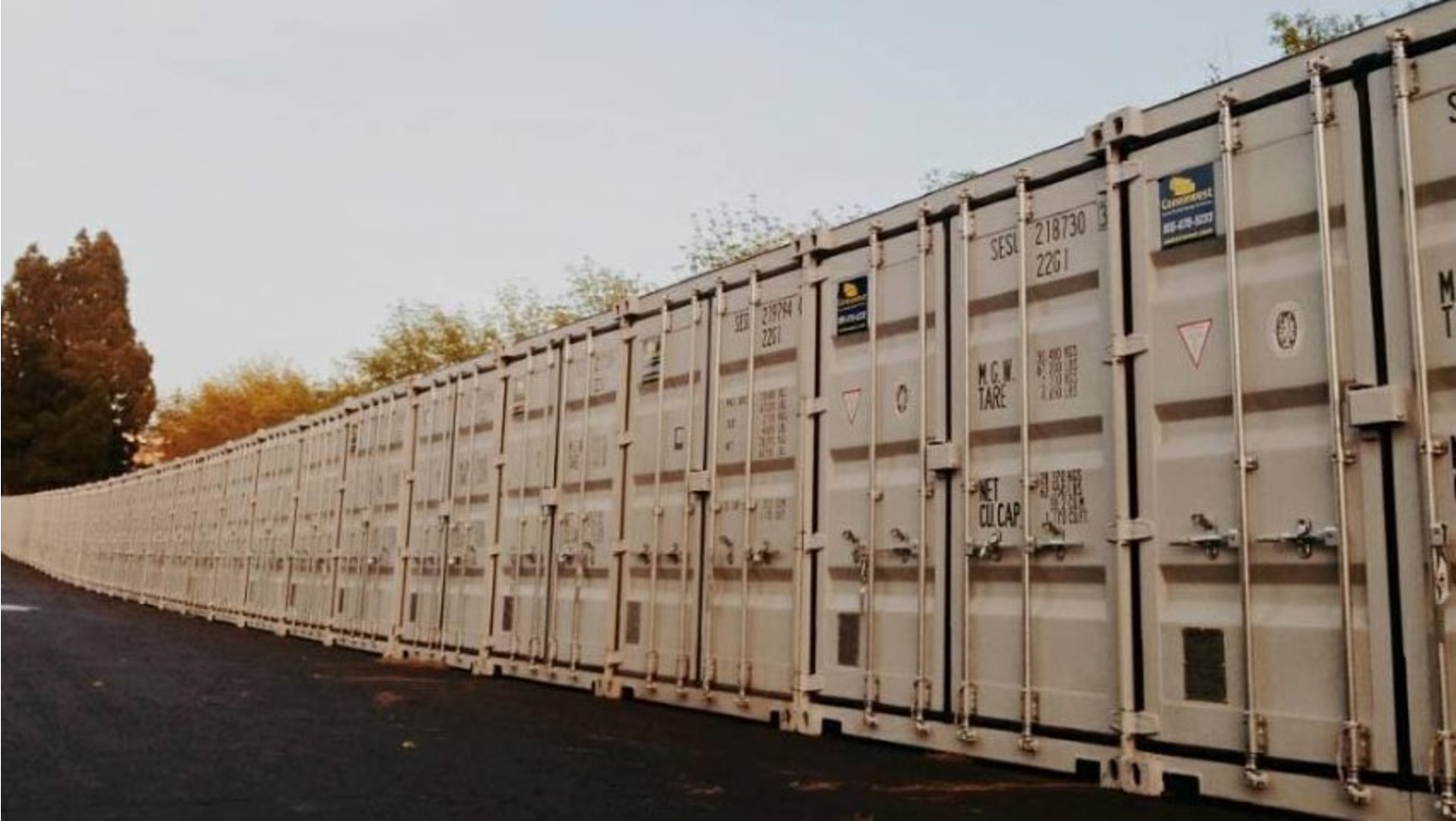How To Connect Shipping Containers
Get a quoteGuide to Connecting Shipping Containers Together
Key Takeaways
- Welding is the most common way to connect shipping containers for a permanent bond.
- Bolting is a flexible method that allows for easy disassembly.
- You may need to comply with local shipping container laws before you connect two shipping containers.
- Conexwest’s shipping container customization team can help you decide how to connect two containers.
Various Methods To Connect Shipping Containers
1. Welding
Welding creates a strong and permanent bond that enhances structural integrity. The primary welding techniques used include:
- MIG Welding (Metal Inert Gas): This method is favored for its speed and ease of operation. It involves feeding a wire electrode through a welding gun and melting it into the base metal to form a strong connection. MIG welding is versatile and works well with the Corten steel commonly used in shipping containers.
- TIG Welding (Tungsten Inert Gas): TIG welding results in high-quality welds with precise process control. It uses a tungsten electrode and a separate filler material to produce clean and strong joints. However, it requires more skill than MIG welding and is best performed by experienced welders.
- Stick Welding: Also known as shielded metal arc welding, this traditional method uses a coated electrode to create the weld. While it is versatile and can be used outdoors, it demands more experience to achieve reliable connections.
2. Bolting
Bolting is less permanent than welding and is suitable for temporary setups or container configurations that may need to change.
In this method, threshold plates are installed along the seams where containers meet and secured with screws. They provide stability and can be used on both the inside and outside of the containers.
3. Joining Kits
For those looking for a DIY approach, joining kits include all necessary materials, such as PVC capping, tread plates, and expanding foam. They come with detailed instructions to guide users through the connection process.
4. Caulking and Sealing
For the connections to be watertight, caulking is often used in conjunction with other methods like bolting or welding. This involves applying waterproof sealants along seams to prevent water ingress. A ridge cap may also be installed on the roof seam to further protect against rainwater penetration.
Conexwest, a leader in shipping and storage solutions based in Northern California, offers new, used, and refurbished containers from 10ft to 45ft, with fast delivery within 3-7 days and container fabrication options like adding shelves and locks. We serve over 10,000 customers nationwide, including prestigious clients like the U.S. Navy and Google. As an ISO 9001 and AWS-certified company, we ensure top quality and competitive pricing. |
8 Steps To Connect Shipping Containers

Connecting shipping containers requires precision and expert advice is recommended
1. Choose the Right Containers
The choice of containers affects the stability and aesthetics of the final structure. Check that the containers are in good condition, free from significant damage or rust, and ideally of the same size for a seamless connection.
2. Prepare the Containers
Before connecting two containers, thoroughly clean them to remove any debris or dirt. Inspect them for any damage or rust. If any issues are found, repair or replace those sections. Proper preparation helps in achieving a secure connection between the containers.
3. Cut Openings
To connect two containers, you need to remove one long side from each container. For structural integrity, retain about 350mm at each end of the opening. This step may require professional assistance, as it involves cutting through steel and reinforcing the openings with box-section steel to prevent sagging in the longer spans.
4. Level the Ground
Check that the ground where you plan to place the containers is level and stable. This can involve clearing debris or using concrete blocks or wooden beams to create a solid foundation.
5. Align and Secure Containers
Once prepared, align the containers and secure them using any of the methods mentioned above.
6. Reinforce Connections
To improve stability, consider adding support structures such as steel beams or columns between the containers. These reinforcements distribute weight evenly and prevent sagging at the joints, especially when large openings have been created.
7. Seal Gaps
After securing the containers, it’s important to seal any gaps for weatherproofing. Use threshold plates over floor gaps and apply caulking along the seams to prevent water ingress. Additionally, ridge caps can be installed on top to protect against rainwater penetration.
8. Final Touches
Finally, inspect all connections for security and make any necessary adjustments. If you have used PVC capping or flash banding for sealing, make sure these are properly applied and painted if needed for aesthetics.
Why Choose Conexwest For Shipping Container Fabrication

Conexwest’s experts know how to connect shipping containers and reinforce them for safety
We are your one-stop shop for comprehensive shipping container fabrication services all over the US. Here’s why you should choose us:
- Customization Options: We provide extensive customization options that allow you to modify your shipping containers with features such as windows, vents, partitions, shelving systems, and custom paint jobs. We can customize your shipping container to be used as housing, offices, and more.
- Expert Craftsmanship: Our fabrication shops across the country are staffed with highly skilled technicians who receive continuous training on the latest trends and technologies in container modifications for top-quality service.
- Warranty Coverage: We stand behind our products and services with a strong warranty coverage—10 years for new ISO shipping containers and 5 years for used cargo-worthy containers.
- Transparent Pricing: You will know exactly what you’re paying for—no hidden costs.
Frequently Asked Questions (FAQs)
- What is the most cost-effective method for connecting containers?
The most cost-effective method for connecting containers often depends on the project specifications. Bolting is more affordable than welding and allows the containers to be separated easily. However, if permanence and strength are your priorities, welding may be worth the investment.
- How can I make sure my connected containers are weatherproof?
For weatherproofing connected containers, it’s important to seal all joints and openings with a high-quality sealant. Adding insulation to the joints can improve thermal efficiency and prevent drafts.
- Do I need special permits to connect shipping containers?
Yes, you will likely need special permits to connect shipping containers, depending on your location and the scope of your project. It's essential to review local building codes and regulations to determine what permits are required. You should also visit your local authority for more help.
- Is it necessary to reinforce connected shipping containers?
Yes, reinforcing connected shipping containers is necessary, especially if large openings have been created between them. You can do it by adding steel beams or columns, which distribute the combined weight and prevent sagging at the joints.
- What is the process for ordering a shipping container from Conexwest?
- Consultation: Contact us to discuss your needs and preferences.
- Selection: Choose from our range of new, used, or refurbished containers.
- Customization: Discuss any modifications you want for your container.
- Quote: We will provide you with a detailed quote based on your selections.
- Order Confirmation: Once you confirm the order, we will schedule your delivery.
- Delivery: We will deliver the container to your specified location.
